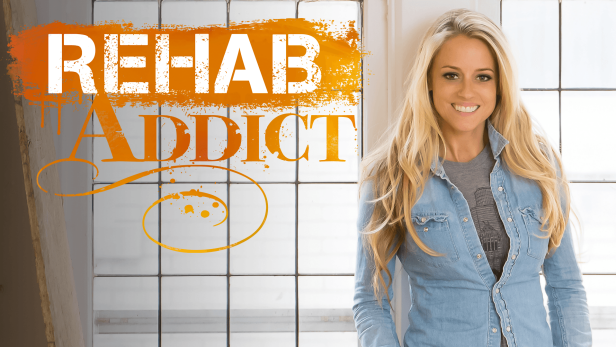Drug treatment is planned to assist addicted individuals stop compulsive drug looking for and usage. Treatment can occur in a range of settings, take many various types, and last for different lengths of time. Since drug dependency is usually a persistent disorder characterized by occasional regressions, a short-term, one-time treatment is usually not adequate.
There are a variety of evidence-based methods to treating dependency. Drug treatment can include behavioral treatment (such as cognitive-behavioral therapy or contingency management), medications, or their combination. The specific kind of treatment or combination of treatments will vary depending upon the client's individual needs and, often, on the types of drugs they use.
Disulfiram, acamprosate, and naltrexone are medications available for treating alcohol reliance,1 which commonly co-occurs with other drug dependencies, including addiction to prescription medications. Treatments for prescription drug abuse tend to be similar to those for illicit drugs that affect the very same brain systems. For example, buprenorphine, used to deal with heroin dependency, can likewise be utilized to deal with dependency to opioid pain medications.
Behavioral treatments can assist motivate people to take part in drug treatment, offer methods for managing drug cravings, teach methods to prevent drugs and avoid regression, and help people handle regression if it occurs. Behavioral therapies can also assist people improve interaction, relationship, and parenting abilities, along with family dynamics.
Group therapy can offer social support and assistance implement behavioral contingencies that promote abstinence and a non-drug-using lifestyle. Some of the more recognized behavioral treatments, such as contingency management and cognitive-behavioral treatment, are also being adapted for group settings to improve effectiveness and cost-effectiveness. However, especially in adolescents, there can also be a risk of unintended hazardous (or iatrogenic) impacts of group treatmentsometimes group members (particularly groups of highly overdue youth) can enhance substance abuse and thereby thwart the purpose of the therapy.
Since they deal with different aspects of addiction, combinations of behavior modifications and medications (when readily available) generally seem more effective than either technique used alone. Finally, individuals who are addicted to drugs frequently experience other health (e.g., anxiety, HIV), occupational, legal, familial, and social issues that ought to be addressed simultaneously.
A Biased View of What Does G.r.e.a.t. Drug Rehab Do?
Psychedelic medications, such as antidepressants, anti-anxiety agents, mood stabilizers, and antipsychotic medications, may be important for treatment success when clients have co-occurring psychological conditions such as depression, stress and anxiety conditions (consisting of trauma), bipolar affective disorder, or schizophrenia. In addition, many people with severe dependency abuse several drugs and need treatment for all drug abuse.
When thinking about addiction treatment, you may be questioning what you can expect during a basic day in rehab. There are lots of types of substance abuse treatments out there, however the majority of follow a basic structure of therapies. Residential inpatient treatment centers are really structured and organized, with comparable activities and treatments in the majority of centers.
Depending upon the setting and the facilities provided, day-to-day activities may vary. Here is an example of what a normal day in treatment may look like: Oversleeping is not part of the program, so anticipate to rise early in the morning to take pleasure in a healthy breakfast. Some programs provide morning classes such as yoga or meditation to assist you start the day in an unwinded state of mind.
I fulfilled a lot of excellent individuals and found out how to change my old habits daily Share an open mind and want. Do it for you, not anybody else.- Ryanna, recuperating addictThere is often a group session following breakfast led by a therapist or therapist that concentrates on subjects connected to the treatment procedure, the 12-step program, addiction and healing. how much does outpatient drug rehab cost.
These daily conferences, in the safety of a regulated healing environment, will help you to start to acknowledge patterns of habits you can change or particular triggers to avoid post-treatment. The Browse around this site middle of the day supplies the most intensive treatment. After a healthy lunch, it is normal to start a series of healing sessions.
CBT refines in on your behavioral reactions to particular triggers. When those are determined, the therapist will guide you towards brand-new, much healthier reactions to those triggers. The individually treatment sessions supply a safe environment for you to do not hesitate to open and share your worries and issues, enabling the therapist to offer tools and alternative behavioral actions to these sources of anxiety.
How Much Does It Cost For Drug Rehab Programs In Hawaii for Beginners
It can be extremely advantageous to the participants to share their individual stories with one another to enable psychological healing. The group members often establish a sense of fellowship throughout the weeks in rehabilitation, and as trust grows they end up being more open in their sessions and establish a genuine compassion and understanding for each other's battles.
These might be tailored for anger management, stress management or grief therapy, providing coping methods to help enhance your ability to handle issues in a controlled way rather than feeling the requirement to use drugs or alcohol. Household support can be an important treatment aspect, which is why most drug treatment centers include it in their programs.
During the household treatment sessions, many problems are dealt with and sensations are addressed. Intrinsic to the long-term success of any drug abuse treatment program, family participation aspects greatly in future assistance for the addicted person after they are released. In addition to treatment, rehabs might also host speakers who share their own stories, offering locals a sense of hope about their own future.

Some drug and alcohol treatment centers have different supplemental treatments readily available, offering more of a range of choices. Alternative treatment types might consist of: Don't http://emiliornna039.bravesites.com/entries/general/the-7-minute-rule-for-what-is-drug-rehab-like lose another second. Enter your number to receive a callfrom a caring treatment expert. Make a Call - OR - Request a CallThere are typically a number of hours of complimentary time offered in the afternoon to be used however the resident chooses.

Some people select to invest leisure time reading or journaling and others might use the time for prayer or meditation. After supper, there may be another short group session. Typically, a 12-step program is available in the evenings, which is extremely advised. The conferences provide a safe, respectful and confidential environment in which fellowship can be promoted which works as an intrinsic aspect for long-term sobriety.
By getting adequate sleep, clients are more alert and have more energy to experience peak participation in daily treatment. Now that you understand what to anticipate for a typical day in drug rehabilitation, it's time to find the best place to start your treatment. Speak to a treatment supplier to discover the best treatment center for your addiction.
Little Known Questions About How To Get Clients For Drug Rehab.
According to the Substance Abuse and Mental Health Solutions Administration, more than 20 million individuals required drug abuse treatment in 2015. Rehabilitation is a thoroughly crafted procedure that offers people experiencing addiction their finest chance to handle their condition on a long-term basis. Residential or inpatient rehab is a form of addiction treatment that provides customers with 24-hour care under the guidance of professionals - how to start a drug rehab center.